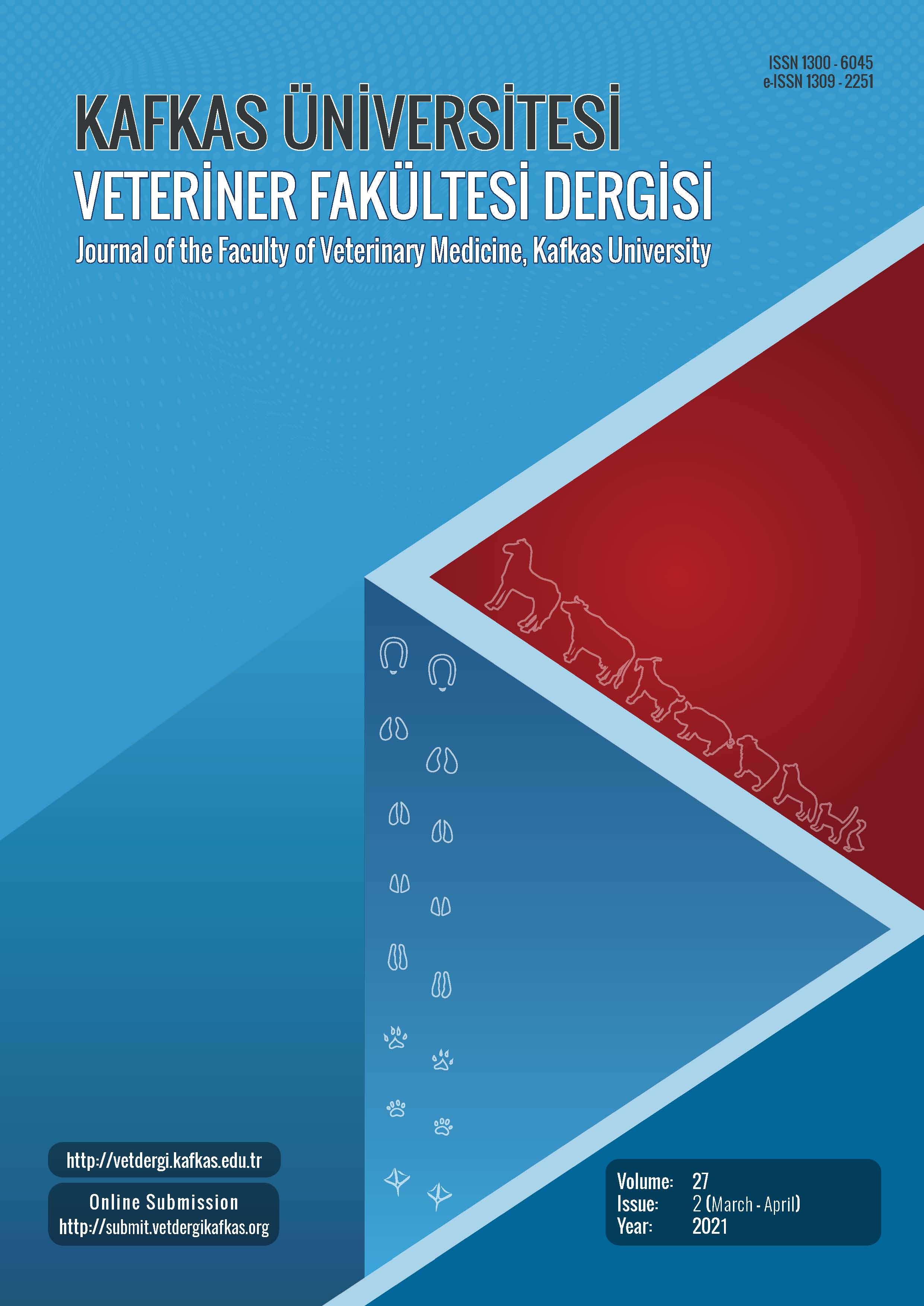
This journal is licensed under a Creative Commons Attribution-NonCommercial 4.0 International License
Kafkas Üniversitesi Veteriner Fakültesi Dergisi
2021 , Vol 27 , Issue 2
Effects of Diff erent Degrees of Cold Stress on FIAF Expression in Pigs
1College of Animal Science and Veterinary Medicine, Heilongjiang Bayi Agricultural University, Daqing, Heilongjiang, 163319, CHINA2College of Animal Science and Veterinary Medicine, Jilin University, Changchun, Jilin, 130062, CHINA DOI : 10.9775/kvfd.2020.24832 Cold stress is the main stressor restricting the development of animal husbandry in cold regions. Fasting-induced adipose factor (FIAF), also known as angiopoietin-like protein 4 (ANGPTL4), plays an important regulatory role in the metabolism of lipids. Its functions include inhibiting lipoprotein lipase (LPL) to eliminate triglycerides and free fatty acids in blood, reducing fat deposition and promoting adipose tissue degradation. This experiment was designed to investigate the eff ects of diff erent degrees of cold stimulation on fat metabolism in finishing pigs. Growing and fattening pigs were randomly divided into diff erent groups and exposed to temperatures of -10±2°C, -5±2°C, 0±2°C, 5±2°C and 21±2°C for 2 h. Serum, liver, neck, abdominal subcutaneous and mesenteric adipose tissues were collected and analyzed by Real-Time quantitative PCR (qRT-PCR), western blotting and enzyme-linked immunosorbent assay (ELISA) to examine FIAF expression. The results showed that a gradual increase in cold stress intensity resulted in a gradual increase in FIAF mRNA and protein expression levels in liver, neck, abdomen and mesenteric adipose tissues and FIAF concentration also gradually increased in the blood. It indicated that FIAF is involved in energy and fat metabolism in response to cold stress and may be regulated by the activation of peroxisome proliferator-activated receptor (PPAR) by free fatty acids in the blood induced by cold stress. Keywords : Cold stress, Fat tissue, Fasting-induced adipose factor, FIAF, Pig










